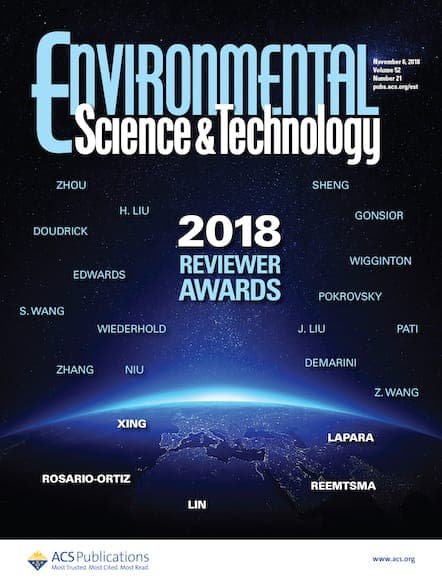Toxic fluorinated chemicals known as per- and polyfluoroalkyl substances (PFAS) have triggered a public health challenge due to their widespread contamination of drinking water. Some scientists have dubbed these compounds “forever chemicals” because they have been virtually immune to microbial degradation—until now. A new study reports that over a 100-day period in the lab, a […]

Toxic fluorinated chemicals known as per- and polyfluoroalkyl substances (PFAS) have triggered a public health challenge due to their widespread contamination of drinking water. Some scientists have dubbed these compounds “forever chemicals” because they have been virtually immune to microbial degradation—until now. A new study reports that over a 100-day period in the lab, a wetland bacterium removed the fluorine atoms from up to 60% of perfluorooctanoic acid (PFOA) and perfluorooctanesulfonic acid (PFOS), rendering the substances harmless. The results offer the first glimpse that sites contaminated with PFAS could potentially be cleaned up using bioremediation.
PFOA and PFOS are just two out of more than 4,700 fluorinated surfactants in the PFAS family. Manufacturers once used PFOA in firefighting foamsand to make Teflon. Companies also added PFOS to firefighting foams and stain repellents. US manufacturers phased out the two compounds after scientists linked them to cancer and endocrine disruption. But they remain the most common PFAS contaminating the environment, released into ground and surface water by the fluorochemical industries and the use of firefighting foams for training and to suppress fires.
With the US Environmental Protection Agency and a growing number of states establishing health advisory levels for PFOA and PFOS in drinking water, scientists are keen to develop bioremediation technologies to eliminate these substances. But the compounds resist degradation because their carbon-fluorine bond is the strongest single bond to carbon—and the key to their persistence in the environment, says Peter R. Jaffé, an environmental engineer at Princeton University. To date, scientists have identified only a few microbes that can partially break down PFOA and PFOS. Because these organisms are unable to attack the C–F bond, however, they just produce smaller perfluorinated compounds that still aren’t degradable, he says.
Jaffé and his Princeton colleague Shan Huang, lead author of the study, had been working with a strain of Acidimicrobium bacteria called A6 that they plucked from a New Jersey wetland. A6, which thrives in an iron- and ammonium-rich environment, performs a reaction known as Feammox, in which it transfers electrons from ammonium to ferric iron, reducing it to ferrous iron. The scientists wondered if the Feammox reaction could reduce the C–F bonds in PFOA and PFOS, thereby breaking them and producing less toxic fluoride ions. Low concentrations of fluoride are often added to drinking water to prevent tooth decay. “So, we decided to test exposing A6 to PFOA and PFOS,” Jaffé says.
The team cultured A6 in the lab with iron and ammonium, with and without PFOA and PFOS. The researchers tracked the concentrations of the two PFAS over time using liquid chromatography–tandem mass spectrometry. The scientists also monitored levels of iron, ammonium, and fluoride with ion chromatography. After 100 days, 60% of the PFOA and PFOS were gone. By comparing the ratio of ferrous iron produced to ammonium removed from the cultures, the researchers determined that A6 was transferring electrons to the PFAS to liberate fluoride ions instead of passing electrons over to ferric iron to produce ferrous iron.
“Although the defluorination is slow, this Feammox research is potentially transformative,” showing for the first time that these fluorinated compounds can be biodegraded, says William Cooper, an environmental chemist at the University of California, Irvine. Compared with pumping groundwater and applying chemical or physical treatments, biological remediation can be done in place relatively easily and more cheaply, he says.
This article is reproduced with permission from C&EN (© American Chemical Society). The article was first published on September 20, 2019.
